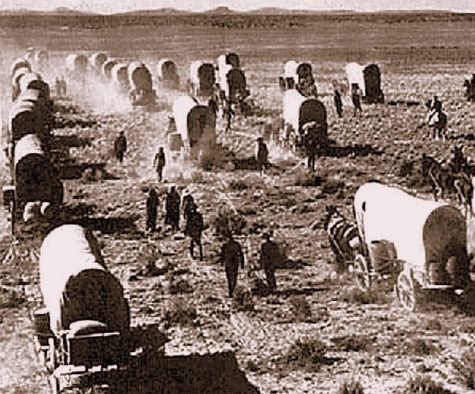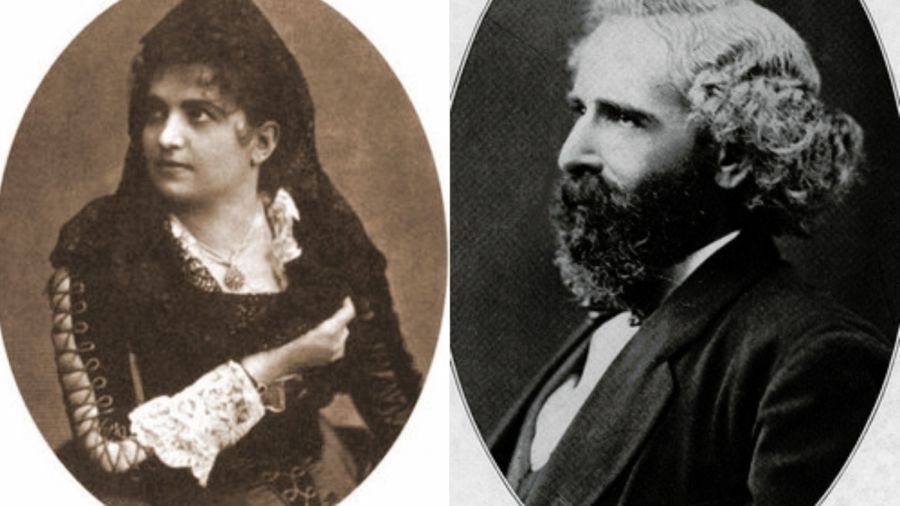Remembering the forgotten St. Louis Jews of the Wild West
Published January 5, 2022
You never know where you will find history, much less the forgotten stories of the St. Louis Jews of the Wild West.
In August, we began researching any possible Jewish ties to the legendary western gunfighter Wild Bill Hickok. During that research we discovered the story of Sol Star, one of the Jewish men who helped tame the Wild West and whose story ends right here in St. Louis.
In more recent research on Star, we further discovered the tales of many more St. Louis Jews from the era, inside a virtual museum called The Jewish Museum of the American West.
ADVERTISEMENT
The Western States Jewish History Association
The Western States Jewish History Association (WSJHA) is dedicated to the discovery, collection, and dissemination of items and information pertaining to the Pioneer Jews of the American West, and how and why they were so successful.
In 2013, WSJHA launched the Jewish Museum of the American West to tell the story of Jewish participation in the development of the American Wild West.
“This is the story of what happened when a group of people, persecuted for 2,000 years, was let loose in a vast new area — the American Wild West — where virtually no one cared about their religion, and where they were free to explore seemingly endless avenues to make a living and raise their families,” writes Jonathan L. Friedmann, the museum’s director and the president, WSJHA.
ADVERTISEMENT
The Jewish Museum of the American West consists of ever-expanding exhibition halls for regions, states, and cities west of the Mississippi River that were considered a part of the American Wild West.
Each hall features a variety of stories pertaining to the area’s early Jewish pioneers, their families and historical sites, how and why they settled there, and what they were able to accomplish.
Exhibits are enhanced by the association’s archive of over 4,000 photographs, many of which are featured in two recent museum books, “Jewish Gold Country” and “Jewish Los Angeles,” both published by Arcadia Publishing in 2020.
The museum regularly receives documents, photographs and family stories from visitors, which augment existing exhibits and occasionally inspire new ones.
And because St. Louis was the Gateway to The West, much of that long history is deeply rooted right here in our hometown.
St. Louis’ Role In Wild WestSt. Louis has played an important geographical and cultural role in the mission of WSJHA, both in defining the scope of their research — primarily the 24 states west of the Mississippi River — and in informing how American Jewish history with a Western focus differs from the more conventional northeastern view.
“The skills, character traits, and motivations found among Jewish pioneer settlers in St. Louis during the first half of the 19th-century were also present among Jews who continued further West in pursuit of the Gold Rush and other economic opportunities,” said Friedmann. “The majority of individuals we highlight were merchants and tradespeople whose success depended on their integrity, ingenuity, multilingual fluency, family networks, risk-taking, and, perhaps above all, ability to find compromises between their Jewish identities and the demands of mobility in the American frontier.”

Missouri Exhibition Hall
“St. Louis is not only a gateway to the West but also a gateway to a certain western Jewish persona. This role in the development of the West, and in American Jewish identity, is certainly something to be proud of,” said Friedmann.
The museum currently has 18 virtual exhibits on St. Louis individuals and institutions; the journal has published eight articles centered on St. Louis Jewry.
In partnership with Friedmann and the Jewish Museum of the American West, Jewish Light is launching a series of stories detailing the rich Jewish past found inside the virtual museum’s Missouri Exhibition Hall. The Light will trace the Jewish story starting with the Louisiana Purchase in 1803, when Jews from Schwihau, Bohemia started settling in St. Louis, Cape Girardeau, Troy and Perryville. We will then discover the men and women behind the creation of the first synagogues in St. Louis including Congregation B’nai El and Shaare Emeth Temple.
Here is a quick snapshot of some of the stories we hope to tell:
A Snapshot of St. Louis’ Jewish History
The first known Jewish settler was Ezekiel Block.
The pioneer Jews engaged primarily in merchandising and invested in other ventures.
Most early Jewish pioneers married Christians. One married into the Philipson family, the first Jewish family in St. Louis.
The year 1841 marked the founding of the first congregation in St. Louis when there were less than 100 Jews living there. By 1850, there were roughly 700 Jews living in St. Louis.
Some of the early Jewish Pioneers of St. Louis, 1840s-185os
Adolph Klauber was born in Bohemia in 1816. In 1840, at the age of 24, he established an iron and metal manufacturing company in St. Louis. Klauber was a founding member of Congregation B’nai El. He married a woman named Betty. They had one son, Daniel (b.1858).
=============================================
Adolph Meyer
Adolph Meyer opened the Phoenix Livery Stable during the 1850s.
Meyer was the unofficial Jewish undertaker and conducted funerals for about 30 years.
==============================================
Jonas Meyerberg
Jonas Meyerberg was born in in Westphalia, Prussia.
In the 1850s, Meyerberg came to America, joining his brother in St. Louis at a small millinery firm.
Meyerberg bought out his brother and created a new company called Meyerberg & Rothschild.
He died in 1905 and was described by the “Voice,” the Jewish newspaper of the time, as “one of the moving spirits of the St. Louis Jewish community.”
================================================
Robert & William Goldstein
Robert Goldstein and William Goldstein were brothers born in Prussia. As teenagers, they journeyed to America, settling in Natchez, Miss.
In 1853, after surviving the yellow fever epidemic, the Goldstein brothers headed for St. Louis.
They worked for a clothing firm.
Then, in 1858, the brothers established R. & W. Goldstein, their own wholesale clothing business.
William Goldstein helped found Shaare Emeth Temple and served as president. He also helped establish the Hebrew Free and Industrial School and the Alliance night schools.
================================================
Solomon Marx
Solomon Marx (1826-1890) settled in St. Louis in 1853.
In 1855, Marx opened a clothing firm. As business picked up, he moved the firm several times, from North Third Street to Main Street, Fifth Street, Seventh Street, 10th Street and, finally, to 13th and Washington.
In 1893, he incorporated the firm as Marx & Haas Clothing Company.
Sources
- Walter Ehrlich,Zion in the Valley: The Jewish Community of St. Louis, Volume 1 (Columbia, MO: University of Missouri Press, 1997).
- Ellen Jane Freund Schwartz, Freund Family Chronicles(St. Louis, MO: 1992).
Samantha Silver is the curator of this early St. Louis Jewish Pioneers exhibit.

















